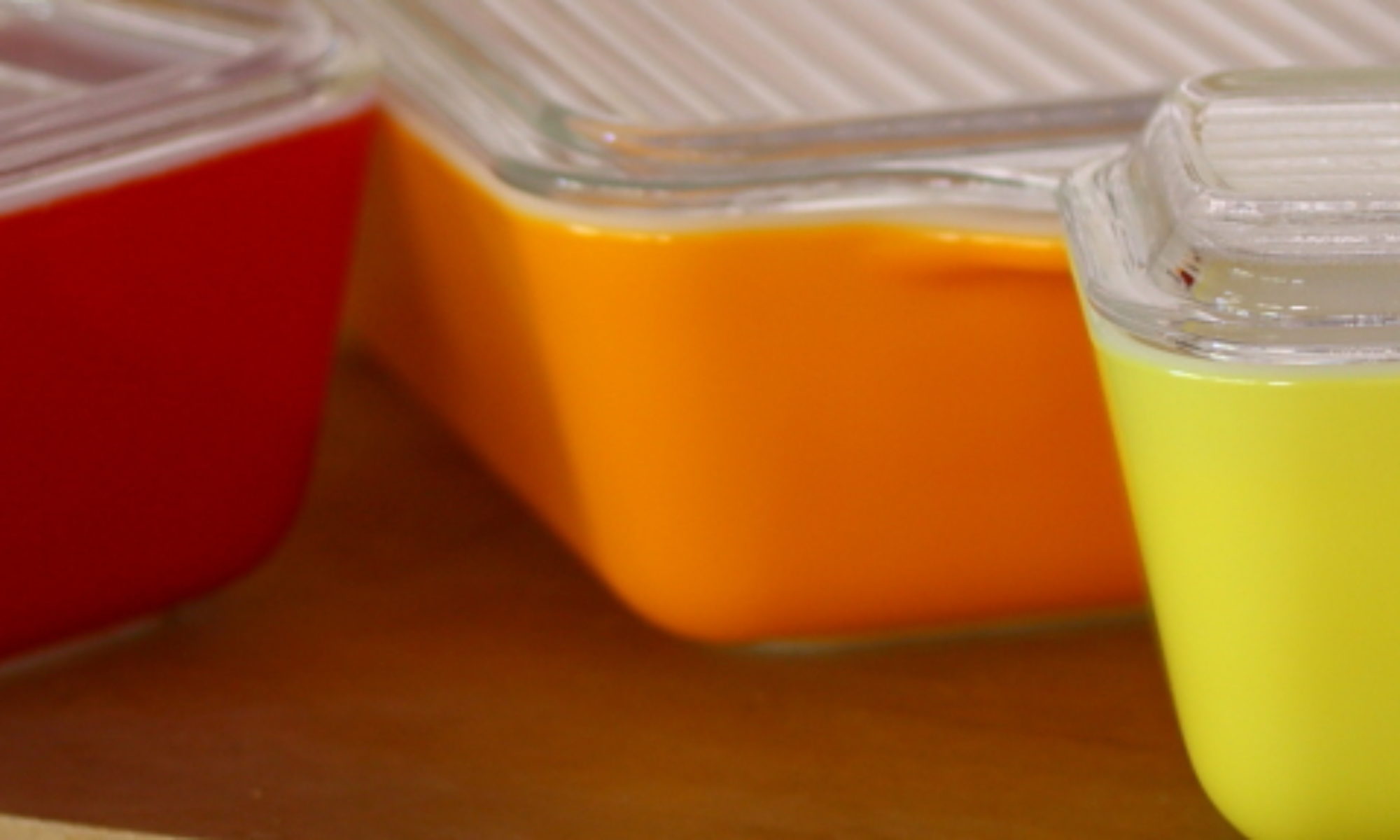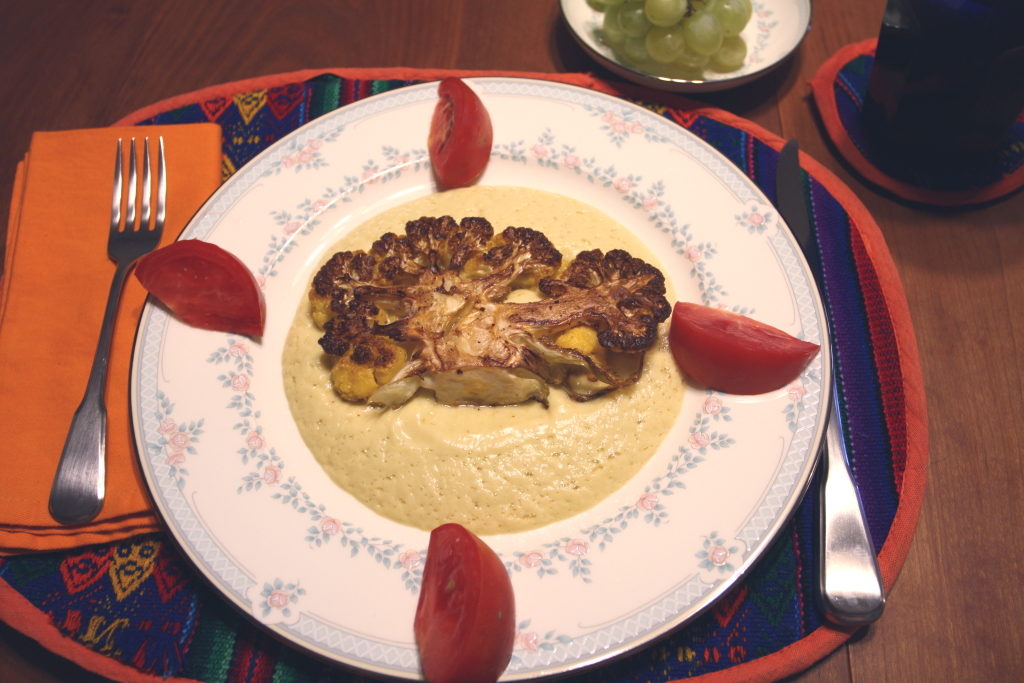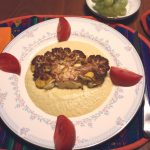
On Saturday, we headed over to the farmers’ market to pick up some vegetables, before we went to the supermarket for the rest of our weekly shopping. Normally, we don’t hit the farmers’ market, as we often have enough vegetables from our weekly CSA share to last a week. This week, we needed a bit more to last us until Tuesday. When we do go to the farmers’ market, we generally don’t think of buying specific types of produce; instead, we look around and see what looks good. This Saturday was different; we wanted something in particular.
We’ve wanted to make this dish since we first saw it in Genius Recipes, by Kristen Miglore, and you can find the original recipe on the Food52 site, but we think our version is better. Why? Well, we looked at that recipe, and noticed it was lacking in seasoning — it only uses salt and pepper. So, we thought, “that Thomas Keller recipe for Cauliflower Gratin was probably the best we’ve ever had; let’s just merge the two recipes.”
So, we’ve taken the best of the best and combined them into the following recipe, just for our fellow Scratchers.
Pan-Seared Cauliflower
Ingredients
- 1 head cauliflower about 1 1/2 pounds
- 1 Tbs butter
- 2 Tbs minced onion
- 1 cup milk
- 1 1/2 cups water
- 1/4 tsp dried thyme
- 1/2 bay leaf
- Freshly ground black pepper
- kosher salt
- Pinch curry powder
- Pinch freshly ground nutmeg
- 2 Tbs vegetable oil
Instructions
- Using a sharp bread knife, slice the head of cauliflower in half. Then from each half, slice off a slab 1 inch thick. Set aside.
- Cut the remaining cauliflower into pieces to make about 3 cups of florets. Set aside.
- Melt butter in a large saucepan over medium heat. When foamy, add onions, and cook until tender, about 7 minutes. Add milk, water, thyme, bay leaf, about 1/2 teaspoon of salt, pepper to taste, and cauliflower florets.Bring to a boil, then simmer until cauliflower is very tender, about 15 minutes.
- Remove bay leaf and drain, reserving 1 cup of the liquid. Place cauliflower florets in a blender with 1/2 cup of reserved liquid. Blend on high until smooth, adding more liquid if needed. Add curry powder and nutmeg and blend to mix. Taste and add salt and pepper as needed. Return to clean saucepan and set aside.
- Preheat oven to 350°F.
- Heat oil in a large oven-proof skillet over medium-high heat. When hot, add cauliflower slabs, sprinkle with salt and pepper, and sear until golden brown, about 4 minutes per side.
- Transfer skillet to oven and bake, flipping cauliflower slabs about halfway through, until tender, 15 to 20 minutes.
- To plate, re-warm cauliflower sauce and pour over plates. Place a seared cauliflower slab in the center.
Ingredient discussion:
We couldn’t imagine this recipe made with just salt and pepper, so we really recommend the thyme (if you have fresh, use a sprig, removing along with the bay leaf), bay, and nutmeg. The surprising addition is the curry powder. You won’t use enough that your sauce will taste of curry, but enough to bring out some cauliflower flavor. For the cauliflower, this would look beautiful with one of those colored cauliflowers — ours was a pale orange– but a stark white sauce will be good, too.
Procedure in detail:
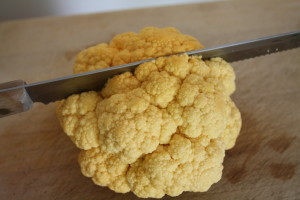
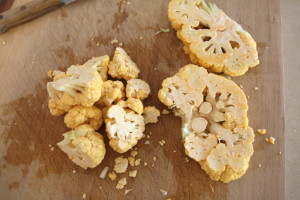
Slice cauliflower. After washing and trimming the cauliflower, you’ll want to slice off two thick slabs from the center. We thought that it’d be easiest to use a bread knife to saw through the head; a chef’s knife might break off too many of the florets. So, we sliced the cauliflower in half, then we sliced away a 1-inch slab from each half. From the remaining pieces of cauliflower, cut or break away florets until you have a pile that looks like about 3 cups worth. Set everything aside for now.
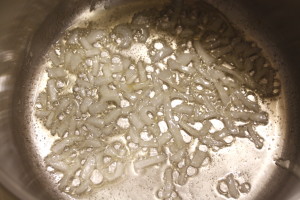
Saute onions. Melt the butter in a large saucepan over medium heat. You’ll be using this pan to simmer florets along with the milk and water, so choose one that will hold it all. Once the butter is melted and foamy, add the onion and cook until tender, but not browned, about 7 minutes.
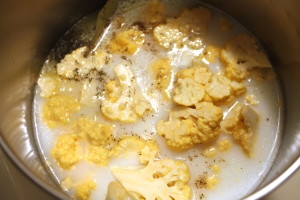
Simmer florets. Once the onion is tender, add the milk, water, cauliflower florets, bay leaf, thyme, about 1/2 teaspoon of salt, and pepper. Bring to a boil, watching so it doesn’t boil over, and stirring as needed, then reduce the heat to a simmer. Continue simmering until florets are very tender, about 15 minutes.
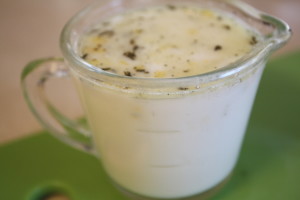
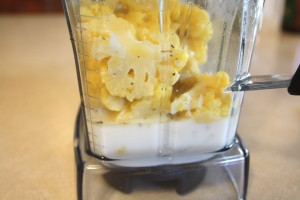
Puree sauce. Remove the bay leaf and drain, reserving about 1 cup of liquid. We found it easy enough to pour off a cup of liquid into a measuring cup, then the rest into a colander set in the sink. Let the florets drain a bit, then transfer to a blender. Add about 1/2 cup of the reserved liquid, and blend on high until smooth, taking care to vent the blender container so the lid doesn’t pop off, sending scalding liquid everywhere. If needed, add more of the reserved liquid to make a thick, but pourable, sauce.
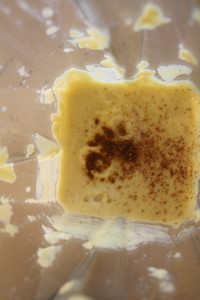
Season. Add the nutmeg and curry powder and blend to incorporate. Use a spoon to taste the sauce, and add salt and pepper as needed, blending and tasting as you go. Once seasoned appropriately, quickly wash out the saucepan and pour in the cauliflower sauce. Set aside until it’s time to plate.
Preheat oven to 350°F.
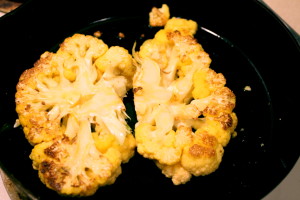
Sear cauliflower. Heat oil in a large, oven-proof skillet (cast-iron is ideal for this) over medium-high, and once hot, carefully set the cauliflower slabs in the pan. Sprinkle with salt and pepper to season. The oil will really spatter, so, if you have a spatter screen, now’s the time to use it — we don’t have one, so we said ouch a lot as the hot spatters hit our arms. Sear the cauliflower until golden brown, about 4 minutes per side. Remember to season the other side when you flip the cauliflower slabs.
Bake. Slide the pan into the oven and bake until the cauliflower is tender throughout, 15 to 20 minutes, flipping the slabs about halfway through to help even out the browning.
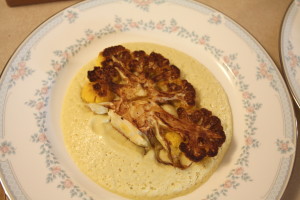
Plate. Re-warm the cauliflower sauce and divide between two plates, covering pretty much the entire plate. Carefully set a browned cauliflower slab in the center and bring to the table.
As we ate, we tried to decide on a rating for this recipe because we knew we’d be posting it. We figured that this is one of those few recipes that would go up to six. It’s that good. The seared cauliflower takes on a nutty flavor, but is delightfully tender inside, and the sauce is good enough just to eat on its own as a soup. We had several slices of bread that we used to sop up the sauce, but it wasn’t enough; we had to head back to the kitchen for more bread. Now, we’re not sure that the original recipe should be considered a genius recipe, but it did give us the idea for a great meal. Five stars.
